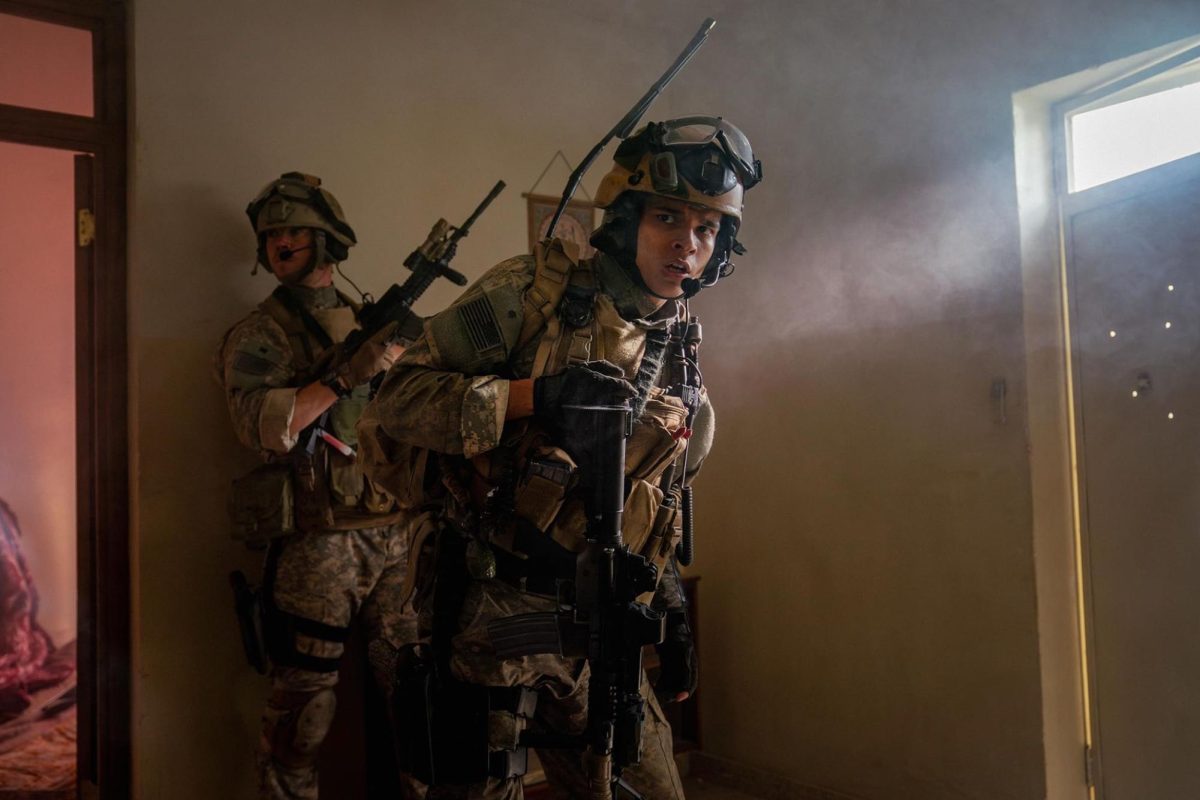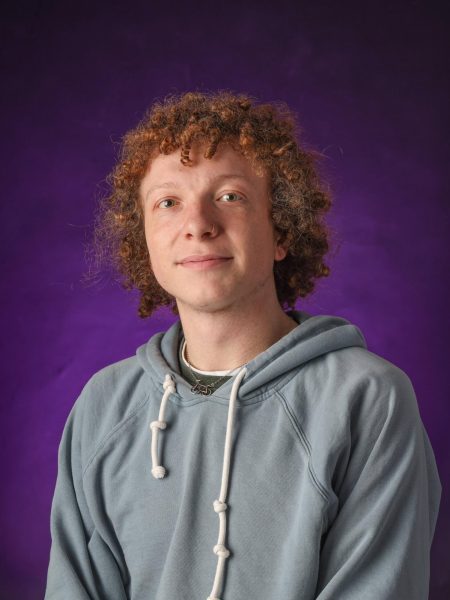Many war films of the past go the extra mile, meaning that they will dramatize certain events or techniques to entertain the audience in the spectacular. That can be somewhat beguiling, but in Alex Garland and Ray Mendoza’s “Warfare,” it is all bloody, unadulterated hostility that focuses on a real-life mission from Mendoza’s time in Iraq.
The film is exhaustingly extensive in its shots of unbearable pain, and its close-ups of dissociative worry are sickening, as if you’re living this experience with this platoon of U.S. Navy Seals in Iraq in the middle of a surveillance mission. As time passes, they update their superiors with the goings-on of the people outside of the home they are taking refuge in. They sweat, with their hands gripping their machine guns, sometimes brushing aside curtains to view outside, waiting for something to happen. This is a large part of the film: waiting.
Garland and Mendoza obviously don’t care about the discomfort of the audience anticipating something terrible, and in fact, that is a large gear in the film. While I kept wanting for something to happen, it was more so the feeling of ripping the bandage off. I knew something was coming, but the question, just like in real war, is “when?”
The film never makes it clear what exactly the mission of the soldiers is, though it would rather focus on the carnage and brotherhood underlying their current situation. I was relieved that the film does not highlight Iraqis as the “bad guys” of the film, and it doesn’t make Iraq a fantasy of itself like many Americans believed it was in the 2000s. Again, the film focuses on the family-like bond of the platoon, with no man being left behind. While only the two translator soldiers among the Iraqi characters are significantly developed, we still get a characteristic glimpse into the soldiers’ tougher-than-nails demeanors.
Sometimes, it’s hard to tell who is who with their matching uniforms, especially Kit Connor’s Tommy and Joseph Quinn’s Sam (both baby-faced). The acting is a telling factor, with some more reserved, some more macho and others more antsy.
The performance from the ensemble cast, with Connor and Quinn, includes Will Poulter, Michael Gandolfini, D’Pharaoh Woon-A-Tai, Charles Melton, Noah Centineo and many others. The cast members brings a positive hoo-rah performance, a terrified and restrained performance and some screaming in agony with grotesque wounds that seem unhealable.
Garland is able to show suspense in an incredibly quiet and restrained way. In his last film, 2024’s “Civil War,” a news photographer moves through her country in a civil war. These films seem to be in tandem, being dramas that can also be classified in some ways as horror. Both films share the same sound designer, Glenn Freemantle. “Warfare” is Garland’s fifth collaboration with Freemantle. Together, they are able to show a buildup of empty space that has as much unease as when there are gunshots and explosions. It makes the films relentless and terrifying.
Mendoza obviously had a vision when he approached Garland about this movie. He wanted to show the brutality of war without either sugarcoating or dramatizing it — to show how PTSD can be instilled in the soldiers who are promised a positive brotherhood-like experience by unseen faces but become a family through shared traumatic experiences. “Warfare” forces viewers into questioning whether warfare is worth anything.








